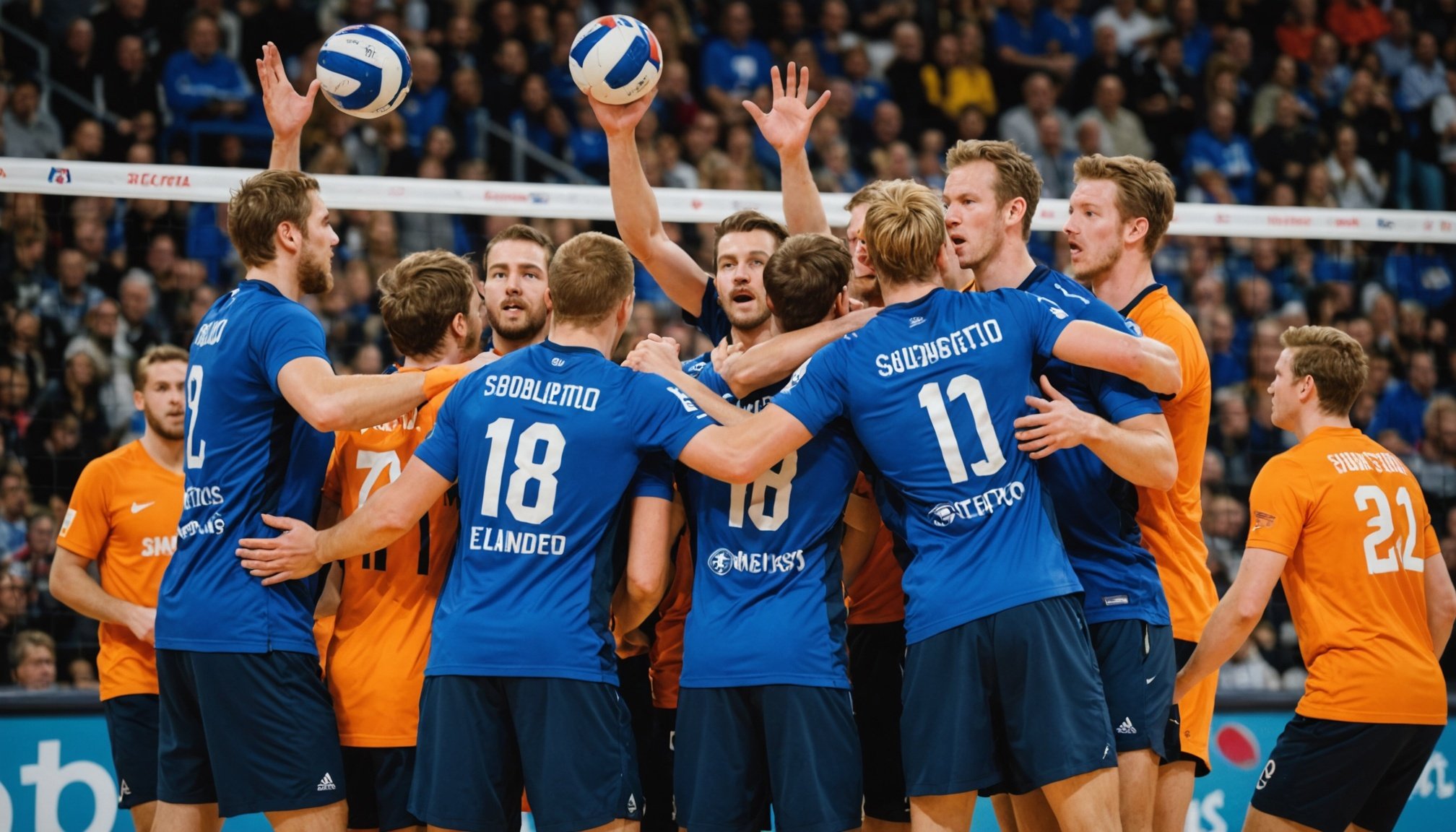Importance of Communication in Team Handball
In the fast-paced world of team handball, communication in sports is pivotal to a team’s success. Effective communication is the cornerstone of enhancing team performance; it ensures that players are cohesive and in sync, reacting swiftly to dynamic game situations. This synchronisation directly influences team dynamics. Imagine a situation where players seamlessly execute plays, thanks to clear communication, resulting in less confusion and more on-target plays.
Strong communication not only aids in the logistics of the game but also nurtures a supportive environment, vital for athlete morale. This directly impacts the psychological benefits that players experience. When athletes feel heard, supported, and can freely exchange ideas, stress levels decrease, fostering a positive atmosphere that enhances focus and motivation.
Also to discover : Discover unique snowshoe outings in avoriaz this winter
Moreover, effective communication helps identify each player’s strengths and weaknesses, allowing strategic roles to be assigned. By implementing such strategic communications, teams can maximise individual and collective performance. Players develop trust in their teammates’ abilities, which reinforces the overall handball performance.
Ultimately, clear and concise communication is not merely a tactic; it is an essential component of team sports that drives both individual confidence and collective success, creating a symbiotic environment where team dynamics thrive naturally.
Also read : Enhance Your Reflexes: Top Drills to Boost Soccer Goalkeeper Reaction Time
Verbal Communication Tactics
Enhancing your verbal communication skills can significantly improve interactions in teamwork environments and everyday situations. Understanding the intricacies of verbal strategies can guide more effective communication.
Types of Verbal Cues
Verbal cues play a pivotal role in ensuring messages are effectively conveyed. These cues include intonation, volume, and choice of words, which help in highlighting urgency, importance, or any emotional undertone. For instance, adjusting your volume can signal enthusiasm or calmness, while specific word choices might communicate professionalism or familiarity. In sports like handball, these cues are crucial for quick, efficient teamwork.
Importance of Clarity in Communication
Ensuring clarity in communication minimizes misunderstandings and reinforces confidence in interactions. Clear and concise communication involves summarizing ideas succinctly without losing meaning. This prevents confusion and allows for smooth and productive exchanges, making it the backbone of successful collaborations.
Techniques for Giving Constructive Feedback
Constructive feedback is essential for personal and professional growth. Effective feedback should be specific, focusing on behaviors rather than personal attributes. Techniques involve using communication drills to practice delivering feedback warmly and objectively. Providing a balance between positives and areas for improvement encourages developmental progress and fosters a supportive environment for learning and reflection.
Non-Verbal Communication Techniques
In sports, non-verbal cues play a critical role, especially in team dynamics. Understanding and effectively using these cues can significantly enhance team performance. Let’s break down their significance.
The Role of Body Language
Body language is a powerful tool in team sports, acting as a form of silent communication. Through subtle gestures and postures, athletes can convey confidence, readiness, or even intimidation. For instance, maintaining an upright posture can project assurance, which boosts morale and can influence an opponent’s perception. Recognising these signals aids players and coaches in understanding team or individual states without verbal interactions, fostering an environment of trust and camaraderie.
Signals and Gestures in Team Sports
In team sports, specific gestures are designed for silent communication. These gestures are crucial on the field or court where verbal communication might be impractical due to noise. For example, basketball players might use hand signals to indicate play calls. This system of communication ensures that teammates are aligned and can respond swiftly without disruption, contributing to a seamless execution of strategies.
Spontaneous Non-Verbal Communication
Spontaneous non-verbal interactions occur naturally and can effectively communicate emotions or intentions without premeditated signals. These include spontaneous reactions like celebrating a score with a fist pump or expressing frustration with a shrug. Such interactions bolster team interactions, reinforcing team spirit and offering genuine insights into a player’s feelings or motivation, thereby enhancing overall team coherence.
Communication Drills for Team Cohesion
Effective communication is critical for any team aiming to perform at its best. Incorporating practice drills into your routine can bolster team dynamics significantly. These exercises foster skill enhancement and strengthen the team-building process, ensuring everyone is in sync. Let’s delve into some specific drills that can elevate team coordination.
Drill: Call and Response
The call and response drill is a straightforward yet powerful method. It sharpens listening and quick-thinking skills among team members, promoting immediate feedback in diverse scenarios. By responding promptly to a leader’s call, players enhance their ability to follow directions, build trust, and foster seamless communication during high-pressure situations.
Drill: Silent Scrimmage
A silent scrimmage forces the team to rely solely on non-verbal cues, a crucial skill when verbal communication isn’t possible. This drill improves awareness and non-verbal coordination within the team. Practising in silence enhances players’ abilities to read body language, anticipate moves, and develop strong intuitive connections, critical in real-game scenarios.
Drill: Role-Playing Scenarios
Incorporating role-playing scenarios allows team members to simulate game-time communication challenges. These exercises encourage creative problem-solving and adaptability. By placing players in hypothetical game situations, they practice navigating diverse communication barriers and testing strategies. It prepares them for unexpected occurrences, enhancing both individual confidence and overall team unity.
Psychological Aspects of Communication
Communication is pivotal in shaping team morale and motivation. Efficient dialogue helps athletes channel their strengths, overcoming challenges together. When teammates feel heard, their motivation increases. They become more committed to shared goals, thus fostering a positive atmosphere. Words can inspire, creating a resilient mental framework essential in competitive environments.
However, understanding the psychological barriers to effective communication is crucial. Negative emotions, stress, or even a lack of trust among team members can hinder the flow of dialogue. Misunderstandings frequently arise from these barriers, causing conflicts or diminished morale. Recognizing these impediments can lead to better solutions and strategies.
Promoting a positive communication environment is essential in mitigating these psychological obstacles. Key strategies include encouraging open discussion, using mental strategies like active listening, and providing constructive feedback. These techniques help in building trust and rapport among athletes, allowing for honest expression without fear of judgment.
Moreover, focusing on clearer communication can prevent potential misunderstandings, ensuring that every team member is aligned with shared objectives. This clarity not only boosts morale but also enhances overall team performance by creating a more cooperative and supportive atmosphere. Emphasizing these aspects can significantly contribute to athlete psychology, making a noticeable impact on collective success.
Case Studies and Testimonials
Understanding real-world success stories can guide us in effective communication strategies. Let’s dive into a few relevant examples to illustrate this.
Case Study: Team A’s Communication Improvement
One of the notable real-world examples is Team A, who faced significant communication challenges that hindered their performance. By conducting an impact assessment, they identified their core issues, such as misunderstandings and lack of effective feedback loops. By implementing new communication tactics, including regular check-ins and clearer information sharing, Team A significantly enhanced their performance. This example demonstrates the reinforced connection between structured communication strategies and overall team success.
Athlete Testimonials
Athletes often provide insightful feedback on how improved communication has positively influenced their performance. Many have reported feeling more confident and better prepared due to streamlined communication with coaches and teammates. These testimonials highlight the profound impact enhanced communication can have on both the psychological and tactical aspects of sports, showcasing the tangible benefits of focusing on effective dialogue.
Lessons Learned from Communication Failures
Analyzing communication failures reveals crucial lessons. Often, these failures stem from assumptions, lack of feedback mechanisms, and unclear messaging. By examining these aspects, teams can learn to avoid similar pitfalls. Thus, identifying common failures and their resolutions enables the formulation of strategies that foster better communication and collaboration.
Conclusion and Key Takeaways
Effective communication strategies stand as pillars of both individual performance improvement and overall team success in handball. By embracing clear and concise verbal and non-verbal communication, teams can synchronise their actions seamlessly, ensuring everyone is on the same page during matches and practice sessions.
One primary communication effectiveness strategy involves establishing clear roles and responsibilities on the court. This approach minimises confusion and enhances the team’s collaborative efforts, allowing players to focus better on their positions and actions. Another critical strategy includes consistent feedback and open discussions among team members, fostering a culture of trust and understanding.
The long-term benefits of effective communication extend beyond immediate performance improvements. Over time, cohesive communication nurtures a robust team spirit and empowers players to make quick and informed decisions. These skills are essential not only in sports but also in various life situations, reinforcing the value of good communication practices.
For lasting team success, one must implement these strategies during practice sessions. Regularly integrating communication drills can enhance players’ abilities to communicate effectively under pressure, thereby translating practice gains into game-day victories. By prioritising communication, teams can not only enhance current performance but also lay the groundwork for sustained success.











